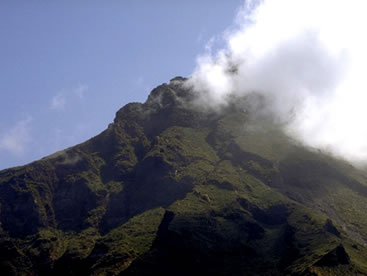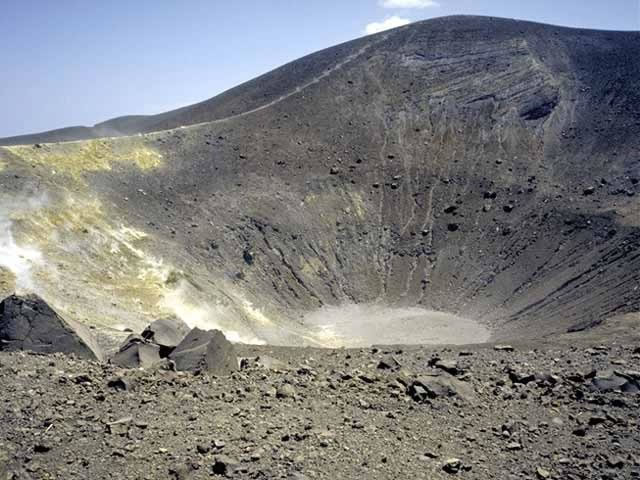 The
archipelago of Aeolian, with its
seven islands, is the emerging
of a large volcanic complex,
mainly submarine, which
stretches for about 200
kilometers and which is a
structure forming a arch with
its concave towards the center
of the Tyrrhenian Sea
The
archipelago of Aeolian, with its
seven islands, is the emerging
of a large volcanic complex,
mainly submarine, which
stretches for about 200
kilometers and which is a
structure forming a arch with
its concave towards the center
of the Tyrrhenian Sea
The parties emerged of the
complex eruptive (islands), were
formed in a million years, while
the parties submerged reach age
slightly more: the oldest age -
about 1.3 million years - is
that of the submarine volcano
named Sisyphus, northwest of the
island of Alicudi. From dating
of the most ancient products of
each island we can infer the age
of birth. In the southern
Tyrrhenian the plaque African
slips below that of Europe,
giving rise the volcanic arch of
the Aeolian islands forming an
inclined seismic zone, which
reaches under the Tyrrhenian
depth of about 450 kilometers.
 In
Lipari, Vulcano and Stromboli
the volcanism is still active;
in the other islands activity is
stopped between 5,000 years and
20,000 years ago. In Lipari the
last eruption occurred in 729
AD, Vulcano in 1889-90 and
Stromboli activity lasted
uninterrupted for at least 2,000
years. The magmas of Aeolian are
similar to those of volcanoes
that make up the "belt of fire"
in Pacific ocean. They show,
over time, the trend towards
ever more basic compositions (lower
content of silica, which is the
main constituent of magmas) and
more rich in potassium (andesiti
and basalts
andesitici with daciti and
rioliti and the shoshoniti of
Vulcano and Stromboli).
In
Lipari, Vulcano and Stromboli
the volcanism is still active;
in the other islands activity is
stopped between 5,000 years and
20,000 years ago. In Lipari the
last eruption occurred in 729
AD, Vulcano in 1889-90 and
Stromboli activity lasted
uninterrupted for at least 2,000
years. The magmas of Aeolian are
similar to those of volcanoes
that make up the "belt of fire"
in Pacific ocean. They show,
over time, the trend towards
ever more basic compositions (lower
content of silica, which is the
main constituent of magmas) and
more rich in potassium (andesiti
and basalts
andesitici with daciti and
rioliti and the shoshoniti of
Vulcano and Stromboli).
Magmas of this kind are typical
of subduction zones: where a
oceanic litosferic plaque
slides under a continental
plaque creating magmas that are
forming arches islands (eg Japan,
Indonesia) or volcanic
mountains, as the chain of Andes,
and generating earthquakes
typically along a slope (Benioff
plan).
